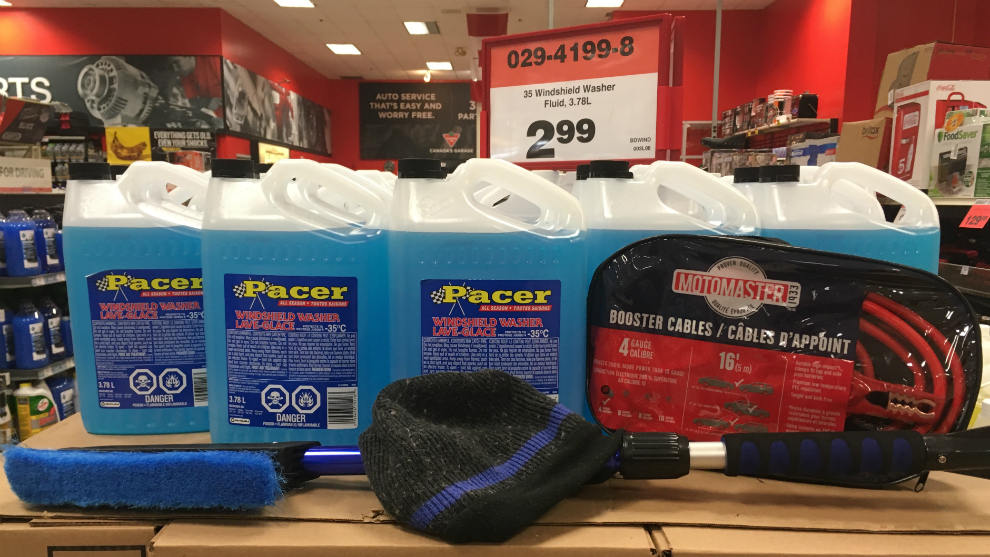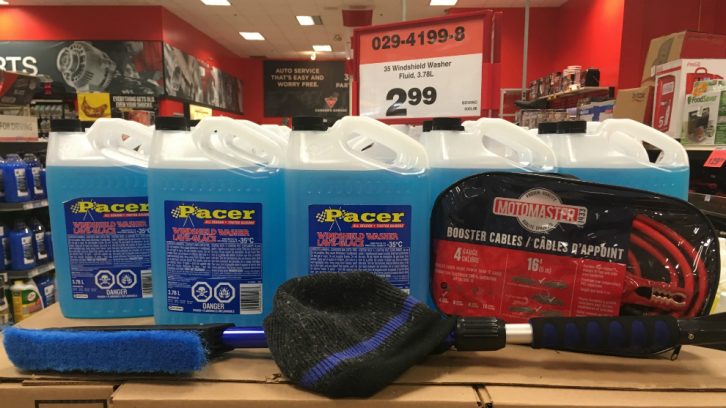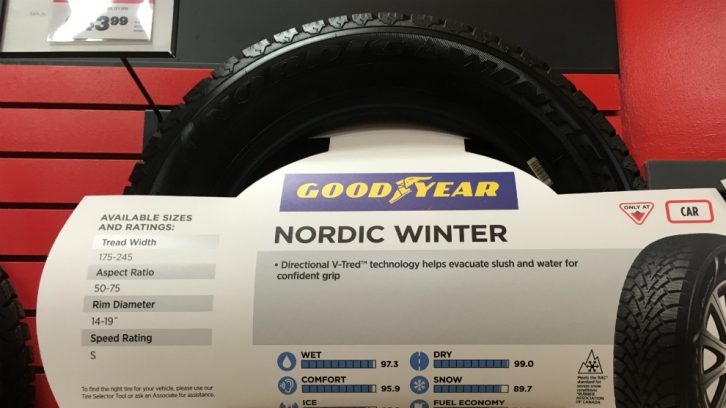Winter
Tips for safe winter driving
Driving instructor Tom Furlong explains how to plan ahead to stay safe this winter

caption
Proper windshield washer fluid, an ice scraper, and booster cables should be in every driver's trunk come winter.
caption
Proper windshield washer fluid, an ice scraper, and booster cables should be in every driver’s trunk come winter.With an active storm season and back-and-forth swings in temperature forecast for the next three months, Halifax drivers should prepare for winter driving conditions.
Sleet, ice, howling winds, and winter’s great white plague, snow, will challenge even the best of drivers. One small mistake, or the wrong choice of route, can result in sliding off the road or into others. But with a little preparation, drivers can minimize their risk before even stepping foot in their car.
Tom Furlong, the regional director of Young Drivers of Canada-Nova Scotia, has been instructing people how to drive for over 40 years. He spoke to The Signal to explain how drivers can plan ahead to stay safe this winter.
Preparing your car
Furlong says a little pre-winter maintenance can go a long way toward improving your car’s winter performance.
“First off all, you need to get your brakes checked,” he says. “You don’t want one brake grabbing before the other, especially when it’s slippery out.”
Worn brakes will “grab,” Furlong explains, and this results in the car veering to one direction when braking – the last thing you want when driving on icy roads.
Furlong also suggests paying attention to the one part of your car that actually touches the road: its tires. Winter tires are a must, “and you need four of them too,” he says with a laugh.
In comparison to all-season tires, winter tires are made specifically for winter conditions. They can improve a car’s braking performance, and their rubber is designed to remain flexible at low temperatures. When a tire stiffens, it loses its ability to provide sufficient traction.
He does urge drivers to avoid studded winter tires as they won’t allow you to accelerate, steer or brake as quickly on the cold pavement.
“They only work better [than winter tires] in thick ice or hard-packed snow,” he says, “and we don’t get those conditions here.”

caption
Making it through winter on all-season tires is often sheer luck.Furlong also recommends keeping your car’s gas tank at least half-full to reduce the chance of condensation developing within the tank itself. More fuel in the tank equals less air, and less air results in less water vapour to condense when the temperature drops. The contamination of a fuel tank by condensation, particularly in cold weather, can result in the car’s engine failing to start.
The added benefit of a topped-up tank, he adds, is that “you won’t run out of gas in the middle of nowhere in winter.”
In the trunk
No matter how well your car is ready to perform, accidents are sometimes unavoidable in winter conditions. A well-stocked winter driving kit, kept in your trunk, is useful in any emergency. Furlong says it should include the following items:
- Snowbrush and ice-scraper
- Kitty litter
- Extra windshield washer fluid and antifreeze engine coolant
- Booster cables
- Snow shovel
- Flares
- Tow rope
- First-aid kit
- Blanket and some food and water (on longer trips)
The kitty litter, Furlong explains, is preferable to salt in providing traction when your car becomes stuck in ice or snow.
“It absorbs moisture,” he says. “Salt melts the ice, turns it to water, and just makes it more slippery.”
And as for lock de-icer? Furlong advises to keep it in your pocket, and not in the trunk “where you won’t have access to it when you need it.”
Preparing yourself
Despite having to experience winter every year, the first snowstorms of the year often see Canadians forget what it is like to drive in winter conditions. In its winter driving guide, CAA Atlantic calls this phenomena “the great Canadian memory loss.”
“You have to remind yourself to slow down sooner, brake smoother, accelerate smoother,” says Furlong, noting that hard braking and quick acceleration are more likely to result in a spin.
Furlong suggests driving according to the road conditions, slowing down and allowing extra space between vehicles. Frequently checking your mirrors and blind spots to get a sense of what other vehicles are doing can give you a few valuable extra seconds to get out of the way of someone who has lost control of their vehicle.
He also suggests planning your route before you head out. This includes taking into consideration delays due to limited visibility or accidents, checking into road and weather conditions with the province’s 511 service, and informing someone of your route and expected arrival time.
And if the weather is too severe, advises Furlong, use your best judgment: “Sometimes planning your route means staying where you are.”
